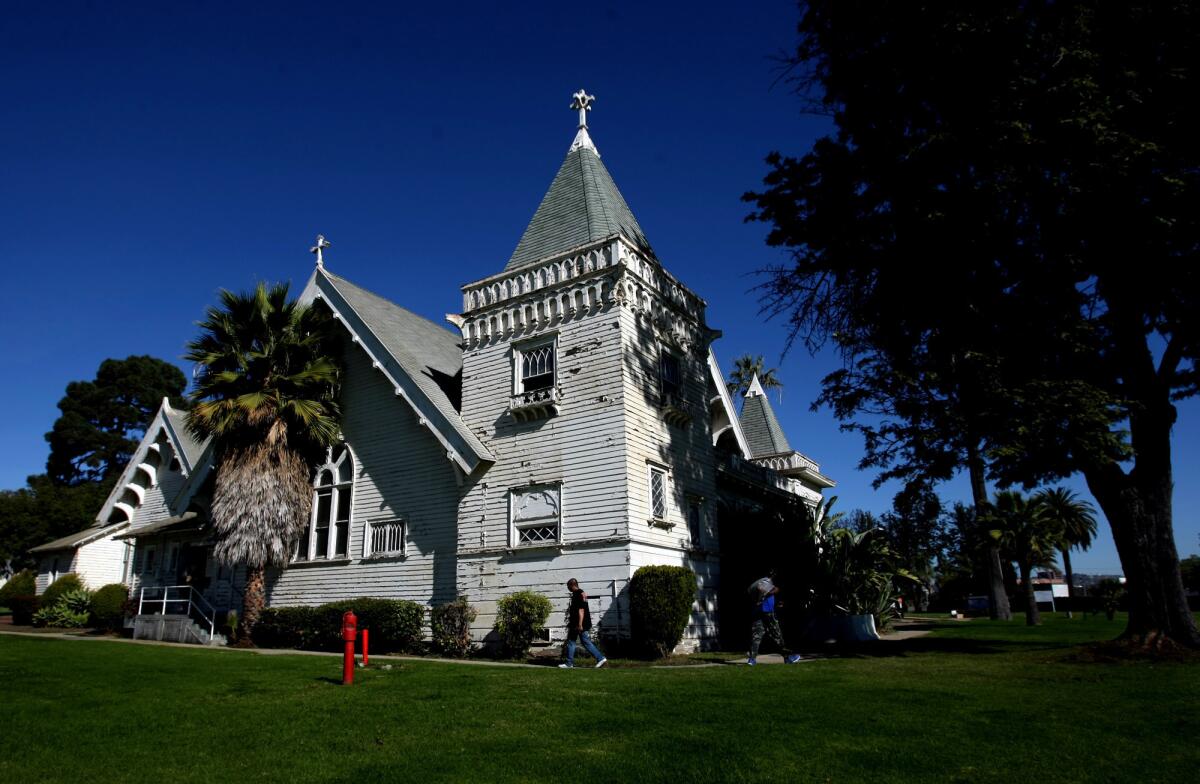Historic VA buildings at risk, preservation group says

- Share via
Hundreds of landmarks on U.S. Department of Veterans Affairs properties are at risk of being permanently abandoned or demolished because of the agency’s lack of maintenance and its failure to comply with federal laws aimed at protecting historic buildings, according to a new study by the National Trust for Historic Preservation.
The VA has more than 2,000 historic buildings across the country, including many on the 11 campuses built in Ohio, Tennessee and elsewhere in the immediate aftermath of the Civil War.
In West Los Angeles, the sprawling VA campus has about three dozen buildings that have been designated as historic structures or have been deemed eligible for inclusion in the National Register of Historic Places.
Among them are two crumbling structures on the National Register: the Victorian-era chapel on Wilshire Boulevard and a trolley stop.
The study, released Wednesday by the nonprofit advocacy group, reported that about half of the VA’s historic buildings were unoccupied and at risk of deterioration — even as the VA finds itself with a growing need for real estate to house and care for veterans of the wars in Vietnam, Iraq and Afghanistan.
“Alarmingly, many of these historic VA buildings are currently lined up in the disposal queue,” the report said.
As a result of recent conflicts and the aging of veterans from earlier wars, the number of veterans receiving VA healthcare has jumped to nearly 6 million today from 3.4 million in 2000.
Instead of renovating old buildings to accommodate them, the VA
has embarked on a spree of new construction, the report said. Several replacement medical centers are planned or are under construction, at a total cost of $10 billion.
The VA has ignored its own analyses showing that restoration would be more cost-effective than new construction, said Leslie Barras, a Texas attorney and preservation expert who conducted the study for the preservation group.
“I believe it’s a bias,” she said. “There’s a perspective that we can’t adapt old buildings, especially for medical facilities.”
ALSO:
Soldier’s wife, days after being stabbed, holds her new baby
Nevada school shooter’s parents: ‘We had no idea he was so upset’
Dispute over prayer at meetings appears to confound Supreme Court
Follow L.A. Times National on Twitter
More to Read
Sign up for Essential California
The most important California stories and recommendations in your inbox every morning.
You may occasionally receive promotional content from the Los Angeles Times.















